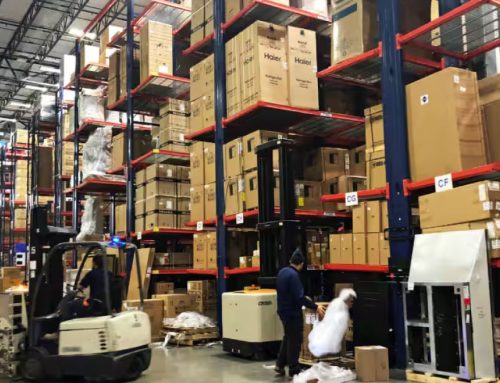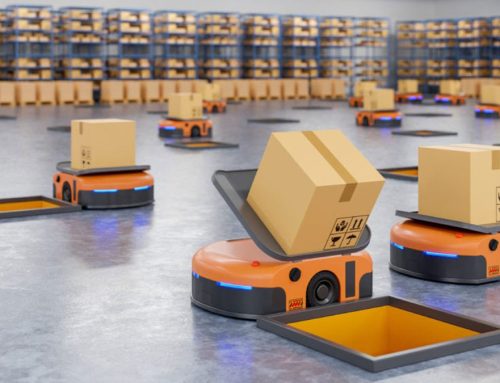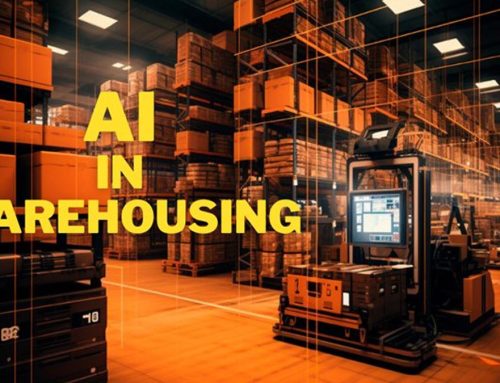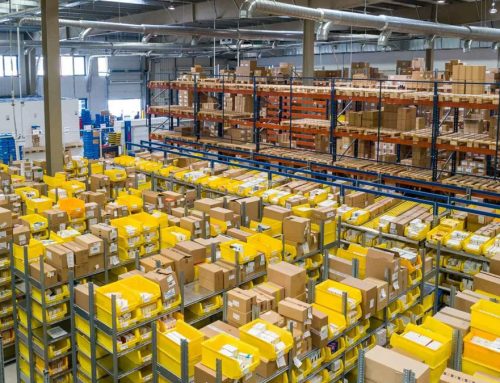CXOToday has engaged in an exclusive interview with Mr. Nirav Doshi, Founder and Managing Director, NIDO
1.What is NIDO about?
NIDO Group is a prominent force in the realm of Intralogistics Mechanization and Automation Solutions. Since our inception in 2010, we have evolved into a comprehensive Manufacturer, System Integrator, and Solutions Provider. Our unique blend of expertise and dedication positions us as Ideators, Designers, Manufacturers, Integrators, Problem Solvers, Business Partners, and Material Movement Experts. We cater to various applications and industries including Micro-Fulfillment, E-Commerce Operations, Pharmaceutical/Retail Fulfillment Centres, Courier/Parcel, 3PL and Logistics, Chemical/Pharmaceuticals, Construction, Warehousing, Retail, FMCG, and Automotive amongst many others.
2. What is the role of tech in logistics, and how can it be optimized?
Technology helps make shipping and delivering things smoother. It lets us see where things are in real-time, so we can make quick decisions. Real-time tracking systems, RFID, and IoT devices improve supply chain visibility, enabling quick decision-making. Inventory management benefits from automation technologies, reducing errors and improving accuracy in tracking and order fulfillment. Warehouse operations can be streamlined, minimizing labour costs and speeding up processes. GPS and smart predictions help with route optimization for delivery trucks, saving time and money and data analytics can help with data-driven decisions. To optimize logistics technology, businesses should continually invest in advanced tools, such as machine learning and AI applications, to gain deeper insights and identify areas for improvement. Employee training and standardization across the supply chain can help with the efficient utilization of these technologies, ultimately improving overall logistics performance.
3. Describe a specific instance where you implemented automation in a logistics process. What were the results?
We have provided conveyor automation for material movement:
1.Unloading of goods from trucks to the warehouses – with our automation solutions, half the manpower in half the time was able to unload the trucks, leading to efficiencies, less dependency on erratic manpower and scope to add further automation like weighing, dimensioning and barcode scanning of goods.
2.Sorting of packages basis the geography – Barcode based sorting systems can work at 10x the speed of humans and with far more accuracy. We have deployed over 75 small and medium sized sorters PAN India.
4. Can you discuss your experience with implementing RFID or IoT technologies in logitics?
IoT is very common in logistics these days. We recently supplied a system to a client where they would check the barcode, weight and dimensions of a package coming into their warehouse. This captured data would then be verified with their master date checking whether the said package was supposed to be in the warehouse or not. Later, checking the weight and capturing the image basis the barcode if it is sorted to the correct zone. All of the above is possible only when there are real time and connected machines across the ecosystem helping in quick analysis of data and relevant decisions taken on they within the utilization of manpower.
5. What methodologies or frameworks do you use for continuous improvement in logistics operations?
Improving how things are done in logistics is crucial for efficiency. Here are some simple approaches used for continuous improvement: Six Sigma: Finds and fixes mistakes in processes to make them better. Kaizen: Makes small improvements all the time to get better. Plan-Do-Check-Act (PDCA) Cycle: This is one the most important frameworks used in logistics to bring about continuous improvements in the system Using these simple methods helps logistics teams and and fix problems, make things smoother, and keep improving over time. Regular checks and teamwork are key to making these approaches work well.
6. What strategies do you employ to identify and mitigate risks in the warehouse automation and supply chain?
Below are strategies to address potential risks in warehouse automation and supply chain:
Risk Assessment, Data security, Redundancy Planning, Supplier & Partner due diligence, Continuous Monitoring, Communication & Collaboration, Training & Engagement.
1. Risk Assessment: Strategy: Conduct a comprehensive risk assessment to identify potential threats to warehouse automation and supply chain processes.
Mitigation: Prioritize risks based on their impact and likelihood, and develop mitigation plans for each identified risk.
2. Data Security Measures: Strategy: Implement robust cybersecurity measures to protect sensitive data related to warehouse automation and supply chain processes.
Mitigation: Utilize encryption, access controls, and regular security audits to safeguard
data from unauthorized access and cyber threats.
3. Redundancy Planning:
Strategy: Develop redundancy plans for critical systems and processes to ensure continuity in case of system failures or disruptions
Mitigation: Implement backup systems, alternative suppliers, and contingency plans to minimize the impact of unexpected events.
4. Supplier and Partner Due Diligence:
Strategy: Conduct thorough due diligence when selecting suppliers and partners in the supply chain.
Mitigation: Establish clear communication channels, set performance standards, and regularly evaluate and audit suppliers to ensure reliability.
5. Continuous Monitoring:
Strategy: Implement real-time monitoring systems for both warehouse automation and supply chain activities.
Mitigation: Use sensors, analytics tools, and automated alerts to identify and address issues promptly, preventing potential disruptions.
6.Employee Training and Engagement:
Strategy: Invest in training programs to ensure that employees are well-versed in handling automated systems and are aware of potential risks.
Mitigation: Foster a culture of safety and continuous improvement, encouraging employees to report potential issues and providing regular training updates.
7. Collaboration and Communication:
Strategy: Establish clear communication channels with all stakeholders in the supply chain.
Mitigation: Foster collaboration to quickly address issues, share information, and coordinate responses to mitigate risks effectively. By implementing a combination of these strategies, businesses can proactively identify and address potential risks in warehouse automation and the supply chain, minimizing
disruptions and ensuring the smooth flow of operations. Regular reviews and updates to risk management plans are essential to adapt to evolving challenges.
7. How can tier 2 and tier 3 cities technologically boost the warehousing space?
The most important point for tier 2 and 3 cities to boost their warehousing space technologically is to assess the current and forecasted needs for their geography, engage with the correct consultants and build warehouses keeping in mind the long term growth of their cities. Predictive analytics to forecast demand, optimize inventory can help in improving decision making Automation like conveyors & sorters, Mechanization like pallet handling equipment with
Racking and infrastructure like proper networking, CCTV cameras, fire fighting equipment, etc are a must. From a data perspective, implementation of a user friendly WMS (Warehouse Management System) can help in bringing data visibility and better controls. Leveraging government incentives for promoting technology adoption in smaller cities is another important aspect which should be fully utilized.
8. What do you see as the emerging trends in logistics and automation, and how would you prepare a company to adapt to them?
Emerging trends in logistics and automation present both challenges and opportunities. Preparing a company to adapt involves staying ahead of these trends and embracing technological advancements. Here are key emerging trends and strategies for adaptation:
1. Autonomous Mobile Robots:
Trend: Increasing use of autonomous vehicles and drones for last-mile delivery.
Adaptation: Invest in autonomous vehicle technology, conduct pilot programs, and explore partnerships with AMR service providers for efficient and cost-effective deliveries.
2. Artificial Intelligence (AI) and Machine Learning (ML):
Trend: Growing use of AI and machine learning for predictive analytics, demand forecasting, and optimization
Adaptation: Implement AI-powered analytics tools, invest in machine learning applictions for inventory management, and train employees to work alongside AI systems.
3. Robotics and Automation in Warehousing:
Trend: Continued integration of robotics and automation in warehouse operations.
Adaptation: Invest in robotic systems for material handling, order fullfilment, and warehouse optimization. Train employees to work collaboratively with automated systems.
4. Internet of Things (IoT) and Real-time Tracking:
Trend: Widespread use of IoT devices for real-time tracking of shipments and inventory.
Adaptation: Integrate IoT devices for better visibility across the supply chain. Implement advanced tracking systems and invest in IoT-enabled sensors.
5. Customer-Centric Technologies:
Trend: Rising importance of customer-centric technologies, including real-time tracking and personalized services.
Adaptation: Prioritize customer experience by investing in technologies that offer real-time visibility, personalized communication, and flexible delivery options. By proactively embracing these trends and implementing adaptive strategies, companies can position themselves to thrive in the evolving landscape of logistics and automation.
9. How can the integration of artificial intelligence impact the future of logistics operations?
The integration of artificial intelligence (AI) is poised to have a transformative impact on the future of logistics operations in several ways:
1. Predictive Analytics and Demand Forecasting:
Impact: AI algorithms can analyze historical data to predict future demand accurately.
Benefits: Improved inventory management, reduced stockouts, and enhanced supply chain efficiency.
2. Route Optimization and Planning:
Impact: AI can optimize delivery routes in real-time, considering various factors like traffic, weather, and order priority.
Benefits: Reduced transportation costs, minimized delivery times, and improved overall logistics efficiency.
3. Warehouse Automation:
Impact: AI-powered robotics and automation enhance warehouse operations, including order picking, sorting, and inventory management.
Benefits: Increased speed and accuracy in order fulfillment, reduced labor costs, and enhanced warehouse efficiency.
4. Supply Chain Visibility:
Impact: AI enables real-time tracking and monitoring of goods throughout the supply chain.
Benefits: Enhanced visibility, quick identification of issues, and improved decision-making capabilities.
5. Chatbots and Customer Service:
Impact: AI-driven chatbots can handle customer inquiries, order tracking, and issue resolution.
Benefits: Improved customer experience, 24/7 support, and efficient handling of routine queries.
6.Dynamic Pricing Optimization:
Impact: AI algorithms can analyze market trends and adjust pricing dynamically based on demand, competition, and other factors.
Benefits: Optimal pricing strategies, increased competitiveness, and improved profit margins.
7. Dynamic Inventory Management:
Impact: AI enables dynamic adjustments to inventory levels based on real-time demand and market conditions.
Benefits: Reduced holding costs, minimized waste, and improved responsiveness to market changes.
8. Collaborative Robots (Cobots):
Impact: AI-powered collaborative robots work alongside human workers, enhancing efficiency and safety.
Benefits: Increased productivity, reduced errors, and improved working conditions. The integration of AI into logistics operations not only improves efficiency but also opens up new possibilities for innovation and competitiveness. Companies that embrace and strategically implement AI technologies are likely to experience streamlined processes, cost savings, and a stronger position in the evolving landscape of logistics.








